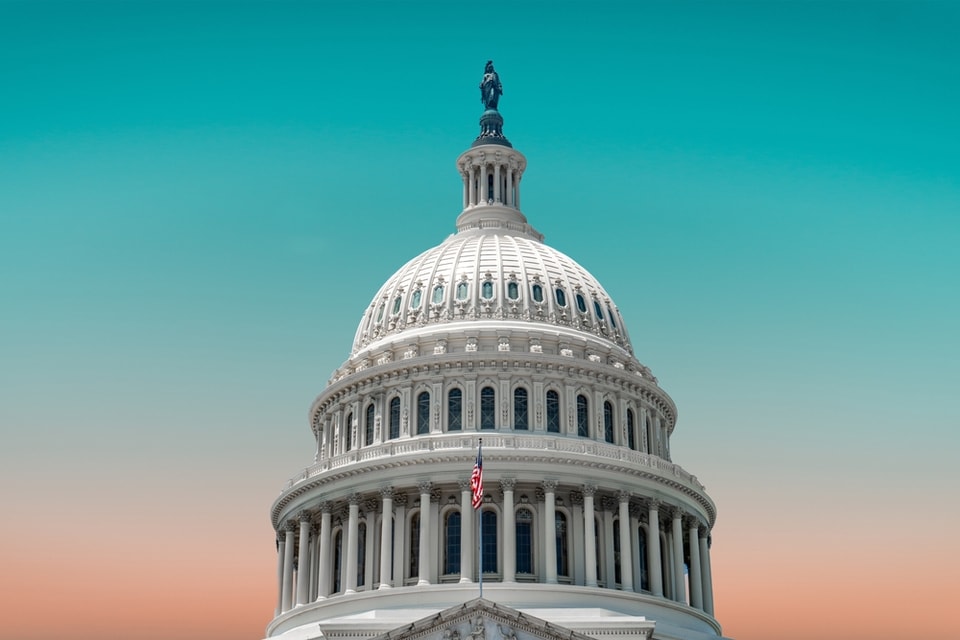Blog Published November 23, 2020 · 8 minute read
HOT TAKES: Congressional Appropriators Are Already Helping Biden Step-Up Climate Efforts Through Clean Energy Innovation
Ryan Fitzpatrick, Alexander Laska, Matt Bright, Jackie Kempfer, Jackie Toth, & Andres Prieto

Earlier this month, the Senate Energy and Water Development appropriations subcommittee released its FY2021 bill and explanatory statement. Looking at this bill alongside the version passed by the House over the summer, it’s clear that President-Elect Biden and Vice President-Elect Harris will be in a strong position to advance climate action through innovation in the first 100 days of the next administration.
We appreciate the great work of this subcommittee under the leadership of Senator Lamar Alexander and Dianne Fienstein to develop a report that has broad support. And given the level of ambition that House appropriators also showed in their support for clean energy RD&D at the Department of Energy, we are looking forward to significant progress on energy innovation through the rest of the fiscal year.
Here are a few “Hot Takes” from Third Way’s Climate and Energy team on the FY2021 approps process, and ways it will help get America’s innovation ecosystem running at full speed toward climate solutions once again.

A few VTO highlights from the Senate bill:
- Nearly $180 million for technologies to lower the cost of batteries;
- $20 million to launch a third round of the hugely successful SuperTruck program, which has already developed and demonstrated technologies that improve the energy efficiency of heavy-duty trucks by over 50% since it began in 2010;
- $40 million for the Clean Cities Program to help cities foster broader adoption of clean vehicles and deploy refueling infrastructure.
While House Democrats hoped to give VTO a massive $1 billion increase in emergency funding in response to the pandemic and the recession, its core bill kept the overall spending level for VTO flat. Even so, the House did include very similar funding levels for the three VTO priorities mentioned above, which sets them up for a big win in a final omnibus bill.
The Senate bill also directs DOE to develop a program plan to help school districts replace diesel buses with electric buses. Grants issued through this program would prioritize school districts serving disadvantaged communities and those in areas with air quality issues. Vice President-Elect Harris has been a champion on this issue, introducing the Clean School Bus Act to help school districts purchase cleaner buses, so I could see this being something the Administration moves forward with quickly next year.

For example, without CCUS, it’s going to be nearly impossible to decarbonize our heavy industrial sector by midcentury. This might be why both the House and Senate direct the Office of Fossil Energy (FE) to double its spending for “research and optimization of carbon capture technologies for use at industrial facilities.” And both chambers included $15 million in funding for new front-end engineering and design (FEED) studies to advance commercial CCUS projects, requiring at least two studies be in the industrial sector.
Likewise, natural gas-fired power plants produce the largest percentage of U.S. electricity, and many are likely to continue running for years to come--yet there are no operational CCUS facilities on natural gas-fired power plants to cut their emissions. That’s why I was glad to see both chambers increase the FY21 funding for CCUS R&D on natural gas power systems to $10 million. Otherwise, the Senate largely kept funding for various CCUS innovation efforts flat, which is actually pretty good considering tight budget caps for FY21.
One area where the federal government could be more aggressive is in supporting the commercial demonstration of CCUS projects. Helping various applications of CCUS get a foothold in the market would galvanize the entire industry into action and vastly increase our odds of decarbonizing by midcentury. The House E&W bill proposed billions of dollars in demonstration funding as part of an emergency stimulus proposal, which would be massively helpful. Even without these emergency funds, though, the House's core bill still gave noteworthy increases over FY20 to carbon capture, carbon use, and underground storage activities.
I can’t overstate how important a broad array of CCUS technologies are for climate goals, or the benefits they can provide for U.S. job growth and competitiveness. President-elect Joe Biden made CCUS a priority in his climate, energy, and economic plans on the campaign trail, and will surely continue to advocate for these technologies from the White House. It’s good to see that he’ll have bipartisan support from appropriators to keep CCUS technologies moving forward in FY21.

The country that leads in this field will also define the safety, security, and nonproliferation values that are exported along with this technology. For the first time, both the House and Senate bills direct the National Nuclear Security Administration (NNSA) to cooperate with the Office of Nuclear Energy and the Nuclear Regulatory Commission on applications of nuclear security, safeguards, and export controls for advanced nuclear reactor designs. With this directive (and at least $5 million to support it), NNSA’s Defense Nuclear Nonproliferation office finally has the mandate to pursue strategic collaborations across the departments and agencies working to bring carbon-free advanced nuclear energy to market. It may not be a ton of money, but it’s a very big deal.

Across its many programs, ARPA-E has supported innovations which, for example, aim to reduce buildings’ energy needs; generate power from hybrid natural gas and fuel cell systems; create safe, lower-cost advanced nuclear reactors; and develop long-lasting energy storage systems.
We’re glad to see continued bipartisan support for ARPA-E, particularly as news continues to circulate that the Biden transition team is actively considering Arun Majumdar for Energy secretary. Majumdar was ARPA-E’s founding director, knows the program intimately, and clearly understands the urgent need for breakthrough technologies to fight climate change.

- $20 million for perovskites, a type of material that would reduce production costs and increase the efficiency of solar panels.
- $68.2 million for offshore wind, which is slated to play a major role in deep decarbonization due to its high capacity factor and scalability.
- $64 million for Enhanced Geothermal Systems (EGS). EGS, unlike conventional geothermal energy, is less constrained by geological conditions and could expand geothermal energy to most of the country.
- $109 million for marine and hydrokinetic energy, which could achieve substantial new clean energy capacity with lower local environmental consequences compared to conventional hydropower, and with more predictable generation patterns than wind and solar energy.
Another aspect that we’re thrilled about is the focus on extending community solar access to low-income areas. Expanding solar to low income communities has local equity benefits by providing quality jobs and cleaner air which is a priority for the President-elect. The Senate bill continues the National Community Solar Partnership Program, which brings together community solar stakeholders to expand access to affordable solar to every American household by 2025. It also directs DOE to provide technical assistance to state, local, tribal governments for developing community solar business models, and to develop programs that support a skilled, robust, and diverse solar energy workforce.
At first glance, the lower funding allocated to solar energy might suggest the Senate was deprioritizing solar energy innovation. But a closer look shows the Senate added $40 million to facilitate the oversight of grid integration activities across multiple renewable technologies including Solar, Wind, Water and Geothermal. Rather than cutting funding, the Senate has reallocated funds to a more comprehensive program. As a growing percentage of our energy comes from flexible, renewable resources we must look at the challenges associated with integration while maintaining resilience and reliability of the distribution system. We are very excited to see the Senate direct DOE to dig into this challenge and provide technical assistance and solutions for the clean energy transition.





